Works begin on new Narrabeen bridge for walkers and bike riders + some narrabeen lagoon bridge no 1 history notes

In 2018, Council engaged with the community on a proposal to build a new 3 meter wide pedestrian and cycle bridge alongside the existing road bridge.
The proposal was well-received by our community who are eager to see improvements to pedestrian and cyclist safety along this well-known pinch point.
Based on feedback received during consultation, the revised design includes:
- Improvements to entry and exit points
- Low-level lighting
- Use of hardwood and stainless steels materials for handrails
- Improved signage
The Revised Plans can be viewed in the Council’s document library on this project’s webpage at: yoursay/narrabeenlagoonbridge
Council commenced the tendering stage in September 2020. Construction was expected to commence mid-2021 but due to Covid was pushed back and has commenced this week.
The proposed multi-use bridge will be a three metre wide pedestrian and cycle bridge located three metres to the west of the existing road bridge.
The new bridge itself will be approximately 110 metres and with the concrete lead-ins it will be approximately 130 metres all up.
The piers of the new bridge will be aligned with those of the existing bridge to maintain navigational channels beneath the bridge.
During extreme storm events Pittwater Road Narrabeen is subject to flooding. To reduce the flood risk and to comply with current bridge design standards, the height of the new multi-use bridge will need to be elevated above the height of the existing bridge.
Rob Stokes MP, Member for Pittwater, Minister for Infrastructure, Minister for Cities, and Minister for Active Transport said this week;
''It's great to see that Northern Beaches Council has commenced construction on a dedicated active transport connection over the Narrabeen Lagoon. This new three-metre wide bridge is the result of $3m in funding from Transport for NSW as part of the B-Line project. It will run alongside the Pittwater Road bridge and connect to the 8.4km Narrabeen Lagoon Trail.''
''At the moment, a one-metre wide section of the Pittwater Road bridge is shared by walkers, joggers and bike riders. It's led to bottlenecks and become a bit of a safety hazard. This project will make it safer and more inviting for people to walk, jog or ride along what is one of Sydney's great waterfront links. I look forward to trying it out when it opens in a few months!''

The Hon. Rob Stokes with Mayor Michael Regan further down the lagoon on the newly installed boardwalk
The existing path along the western side of the vehicle bridge along Pittwater Road will be temporarily closed during construction. Pedestrian diversions will be in place.
Completion of works are expected for May 2022, weather permitting.
The council also has Active Transport (walking and cycling) program Grant funding proposals for 2022/23 listed at present, seeking feedback from residents on opportunities to introduce more shared paths in 2022 and 2023. The projects proposed on their webpage are grant dependent, which means the council can only build them if they receive the funding under the NSW Active Transport Grant.
Those proposed are:
Bassett Street, Mona Vale - Shared path and pedestrian crossing upgrade
proposing a 2.5m shared path for pedestrians and bicycle riders which will provide an active travel connection between Mona Vale Beach and Winnererremy Bay as well as to commercial and industrial areas and Pittwater High School. Existing trees would be maintained. Length of path: 1060m Typical width of path: 2.5m
The proposal would also see improved pedestrian and cyclist crossing points at:
1. Bassett Street – 2.5m shared path on the southern side, between Barrenjoey Road and Mona Street
a. Improved crossing at Tengah Crescent and Perak Street
2. Mona Street – 2.5m shared path on the eastern side between Bassett Street and Pittwater Road
b. Upgrade existing pedestrian crossing to a raised combined pedestrian and bicycle crossing
Jacksons Road, Warriewood - Shared path and pedestrian crossing upgrade
A 2m shared path for pedestrians and bicycle riders through Warriewood Valley Sportsground which will provide active travel connections to the Narrabeen Education Precinct, sporting facilities, Warriewood B-Line, Warriewood Square and other key destinations.
The upgrade to the pedestrian crossing in Jacksons Road, near the Boondah Road intersection, to a raised pedestrian and bicycle crossing will connect existing and planned shared paths.
Future shared paths will be constructed as part of the Warriewood Valley Community Centre and Boondah Road upgrade.
Collins Street, North Narrabeen - Shared path
Proposing to provide a 2.5m shared path on the eastern side of Collins Street and Lake Park Road between the existing shared path in Walsh Street and Narrabeen Lagoon.
Council states this will provide a valuable connection for pedestrians and bike riders in the local area to access facilities such as Pittwater Rugby Park, Warriewood B-Line and recreational facilities around Narrabeen Lagoon. However it should be noted that the proposal involves removing four on-street carparking spaces.
Pittwater Road, Queenscliff - Pedestrian and cycle bridge upgrade
Addiscombe Road & Kenneth Road, Manly Vale - Shared path and pedestrian crossing
Highview Avenue, Manly Vale - Footpath and stairs
Blackbutts Road, Frenchs Forest - Shared path
Allambie Road, Allambie Heights - Shared path
To find out more and view the plans visit: yoursay/202223-active-transport-proposals
Comments for all proposals close Friday February 18th 2022 (5pm).


A few Narrabeen Lagoon Bridge No 1 History Notes
The original way across Narrabeen Lagoon was simply a path that could be waded on at certain low tides, as described in 'My Holiday' by Charles de Boos in 1861:
The road now led us along a swampy honeysuckle flat for rather more than half a mile, and then brought us on to the margin of the Narrabeen lagoon. Narrabeen is a somewhat extensive lagoon, connected with the sea by broad sandy flats covered by the tide at high water, but hire at low water, with the exception of a distance of about twenty rods in width, forming a channel by which the surplus water of the lagoon runs out into the sea.
The opening to the sea is somewhat narrower than this, though deeper, taking a man to the waist in wading over, whilst at the regular crossing-place the stream at low water is not much over the knee. It is situated between the island fall of the high precipitous ridge that, jutting far out into the ocean, forms Narrabeen Head to the north; and to the south, the long low sandy beach that extends northerly from the Long Reef.
The large sheet of water that forms the lagoon is situated some two miles from the sea, with which the sandy flats connect it, although at high water, and particularly at spring tides, one broad expanse of water extending in one continuous sheet from the ocean into the interior for a distance of five miles is presented to the view, forming a magnificent lake, by no means wanting in picturesqueness and rude grandeur in some portions of it.
Where the road crosses, the country for some distance around is flat, and consequently tame, and the picture is rendered sombre by the low, thick growth of ti tree that fringes the water line, and the dark leaved honeysuckles of the flat land beyond ; but higher up, where the fresh water of the lagoon commences, where ranges clad with giant timber come down to its margin, and where numerous gullies with the rich, dank jungle vegetation of the tropics, including the cabbage-tree palm, the fern tree, the bengola, and wild vine, empty their watery contributions into it wild landscape views might be taken fully equal to many of those about which artists have raved so much.
I have said that the morning was cloudy, and consequently the sun, not yet very high, was overcast and as we came down to the channel, over which we had to cross, the wind swept coldly over the sandy beach, making the task of stripping and crossing anything but a pleasant one. Under the circumstances, the twenty rods of width-for luckily we had hit the extreme low water - appeared, in my eyes a mighty waste of waters, and in the absence of guide or direction, it seemed a somewhat dangerous experiment to venture upon, particularly as the water was evidently running out with great swiftness.
"Oh," said Tom, as I expressed my doubts, " there's no danger; its all right !"
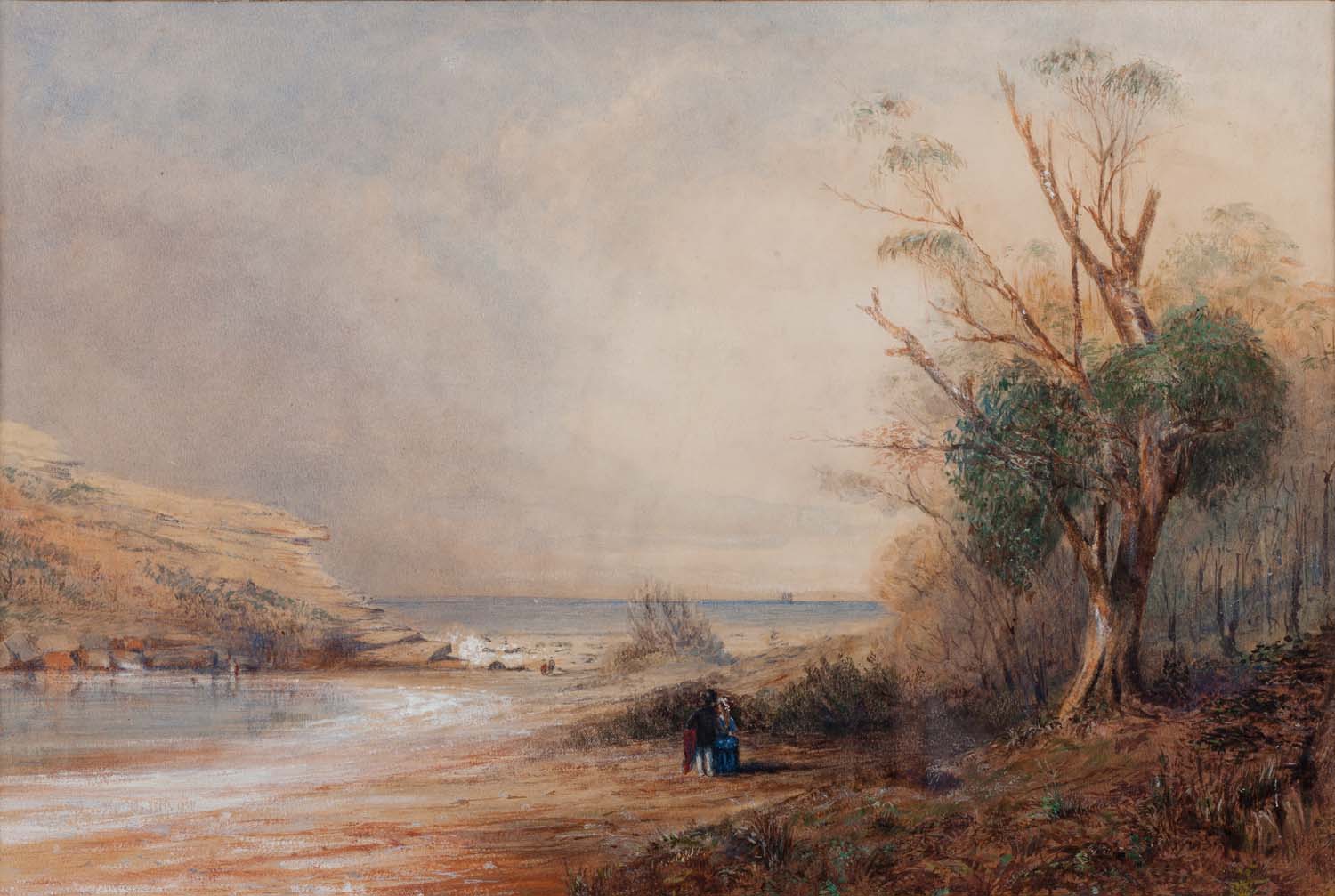
So we sat down, pulled off boots and stockings, and tucked up our trousers as high as we could ; but I noticed that with all his boasting, Master Thomas loitered considerably over his preparations, growling audibly over "those blessed boots," the getting on again of which he declared to be a matter of considerable doubt. Tom grumbled and fumbled so long, that Nat, declaring that "he wasn't going to wait getting cold through for him," took the lead in the advance, walked nonchalantly into the water and made steadily for the other side. I watched him with fear and trembling, expecting every minute to sea him disappear, but, as I perceived that he got half-way over with the water only up to Ins knees, I took heart of grace and ventured in. But oh the terrible agony of that first plunge! The water was as cold as if it had been fresh melted snow, and my feet, having been warmed by the brief walk, felt the change most bitterly. But on and on I went, the chill of the water biting in rising circles round my legs as I got deeper and deeper in the stream, causing an agony unspeakable. Just as I was about half-way across, I turned round in order to see by the distance I had passed how long this torture was to be continued and there I beheld Tom, all ready for the passage, peeping out at us through the bushes. He caught my eye, and shouted "Tell us if it gets any deeper!
The old dodger had quietly pushed us on ahead, in order, as he said, that we might take soundings for him. I made him no answer, for I was too full of my own especial sufferings just at that moment j and, i without joke, it was as painful an ordeal, in regard to mere corporeal pain, as ever I went through m so brief a time. In fact, so acute was it, that I felt as I neared the end of my torture as if I could not possibly hold out until I got out of that blood-chilling stream, but that my feet must give way, and that I must fall. However, across I did get, without the fall that I considered inevitable, and it was only by looking down at my feet and seeing them there doing duty, that I could assure myself that I still possessed those appendages. The feeling I experienced on quitting the water was as if feet ankles and legs had been cut off, just at the place where the water had reached highest, with a red hot saw. Though I looked down occasionally to assure myself of the fact that I still possessed them, it was only after a ten minutes' run upon the sand that any sensation of feeling in those useful members made assurance doubly sure; and during the whole of the day I felt that burning ring round my leg, sometimes with painful distinctness.
There was a large flock of sand pipers, small birds, somewhat about the size of a lark, but with long lags like a snipe, that were running about the sand picking up their morning meal. I tried very hard to got a shot at them, but they ran away so fast and kept themselves so pertinaciously out of gun-shot that at last I let fly haphazard at them, and of course got nothing.
We now made for the opposite bank of the stream, where, above high watermark, the grass grew in thick coarse tufts forming a convenient towel with which to wipe the sand from our feet, and here we once more resumed boots and stockings, and got into marching on, though not before Tom had had a desperate struggle with his rebellious watertights, in which, from dread that in the end the boots would get the best of it, we were at last fain to join, and so by dint of numbers gained the mastery. Tom seemed quite proud of his achievement, and stalked along in consequence quite boastfully for the rest of that day's journey.
We had hung our loads on the posts of a fence that skirted the edge of the sand, and which enclosed paddock of long reedy grass, as high as a man's waist though beyond some gently undulating land the crest surmounted by a not very neat but substantial looking slate dwelling, rose up from the marshy plain, and appeared to be rich cultivated land. We were about to take our loads from the temporary pegs on which they hung, when we were joined by another wayfarer, who, like ourselves, had just crossed the lagoon, and came up to us to reconnoitre. ....
[To be continued.) MY HOLIDAY. (1861, July 1). The Sydney Morning Herald (NSW : 1842 - 1954), p. 2. Retrieved from http://nla.gov.au/nla.news-article13061639
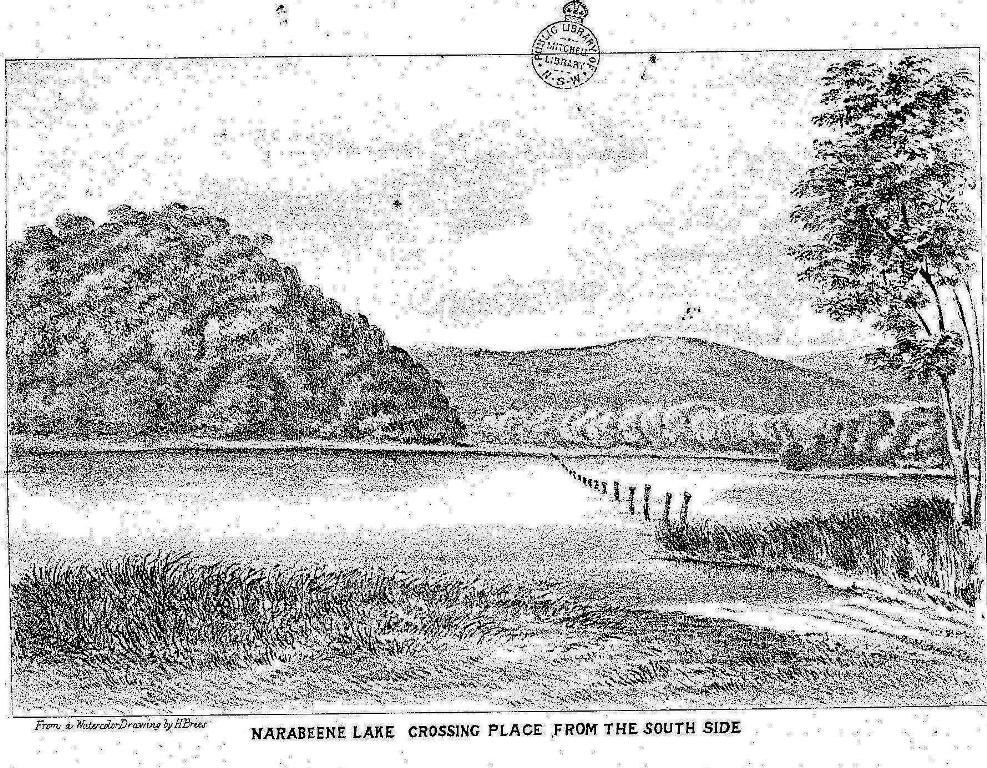
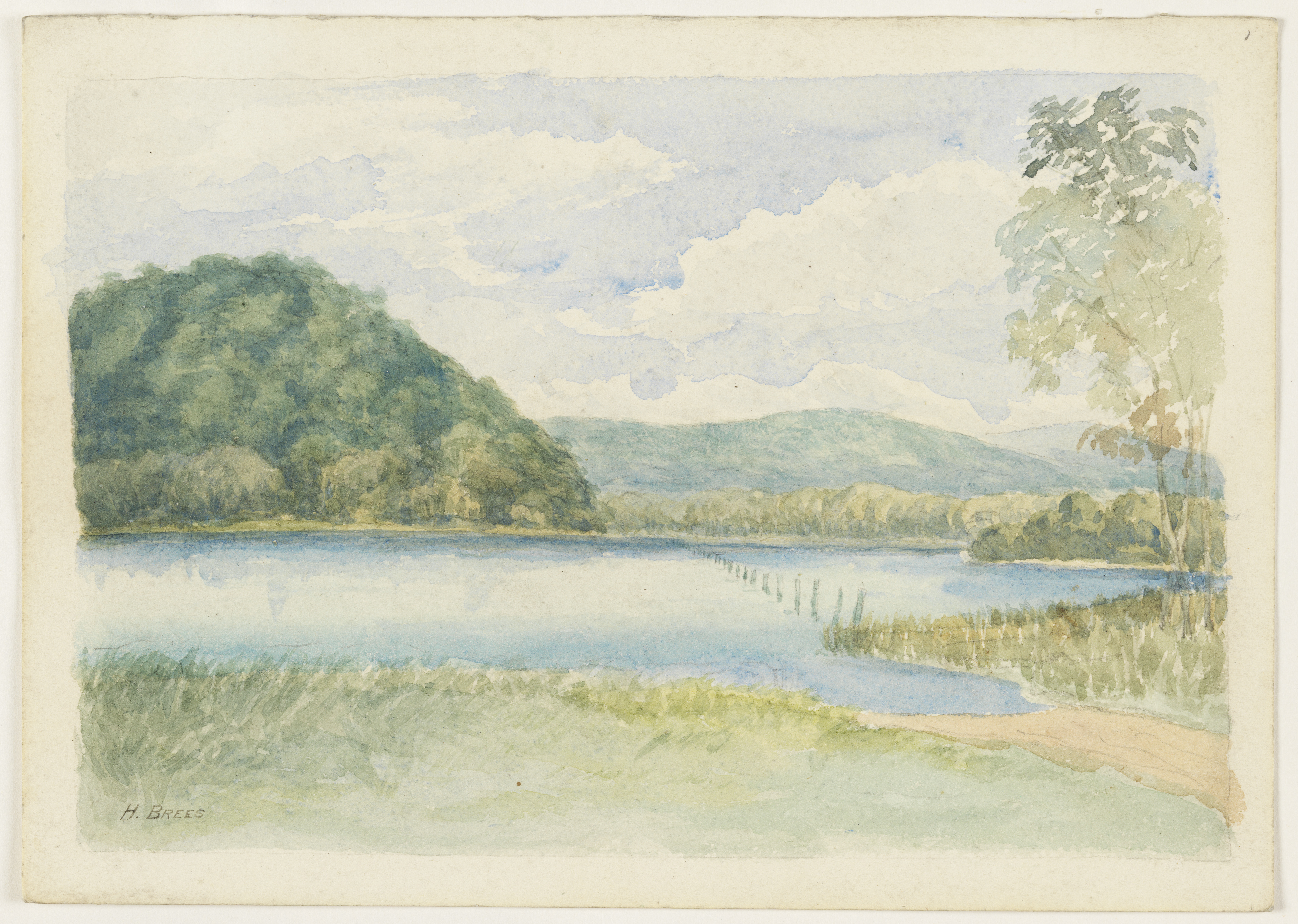
In 1881 the first moves to put a bridge across Narrabeen Lagoon commenced:
The Sketcher.
A Trip To Gosford.
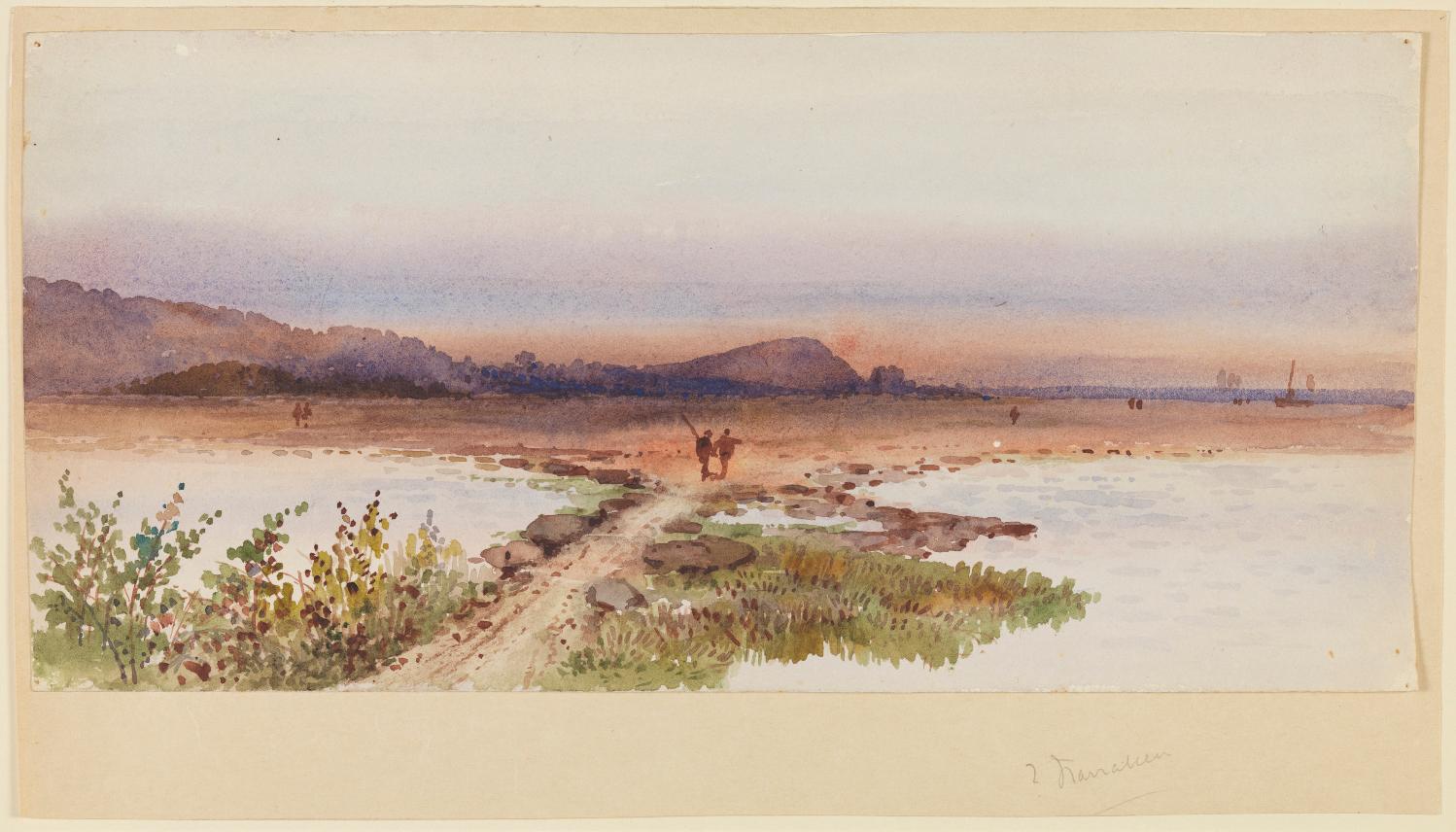
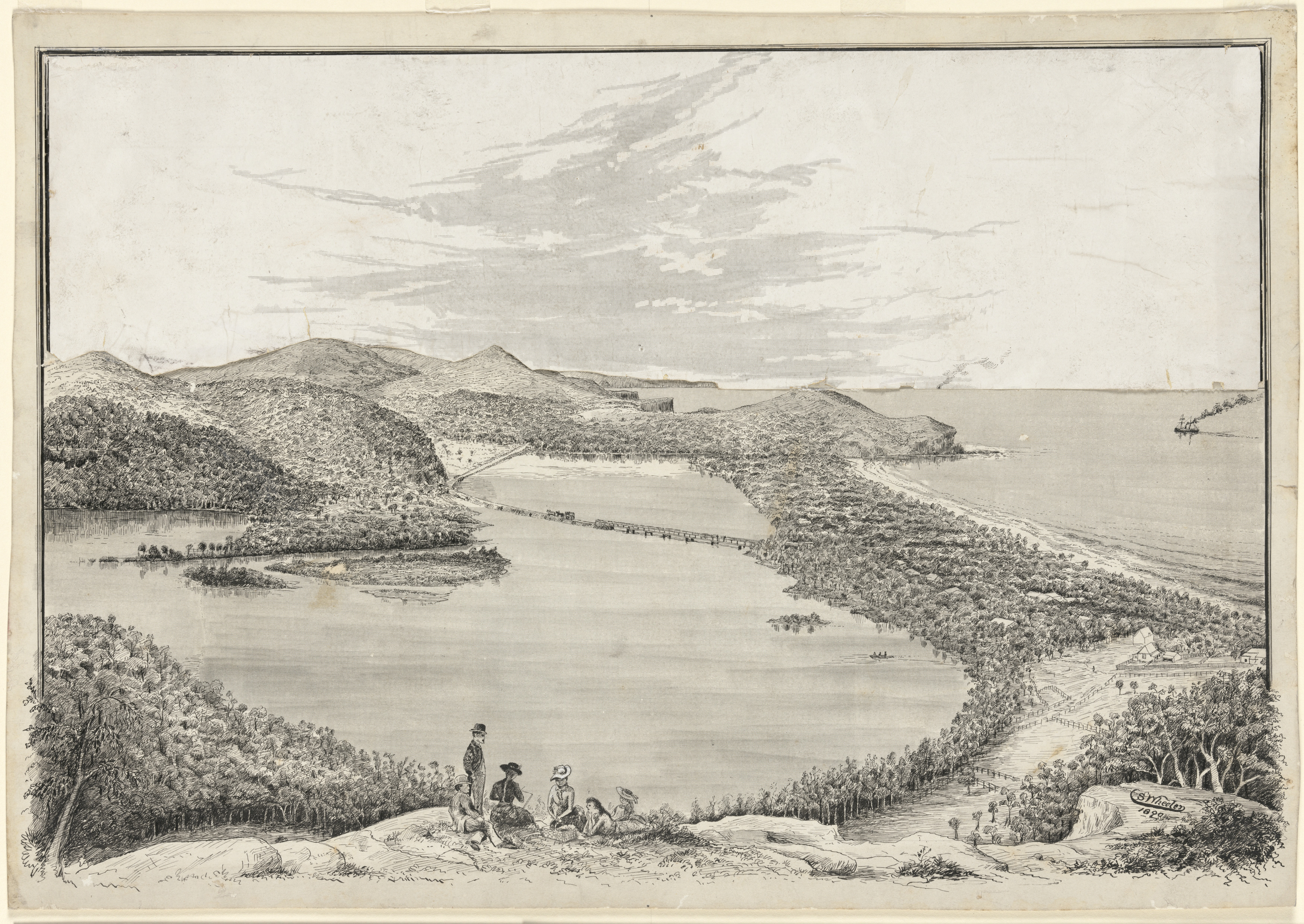
Narrabeen Lagoon, 1890/ C. S. Wheeler. Item: c11295_0001_c, courtesy Dixson Library, State Library of New South Wales
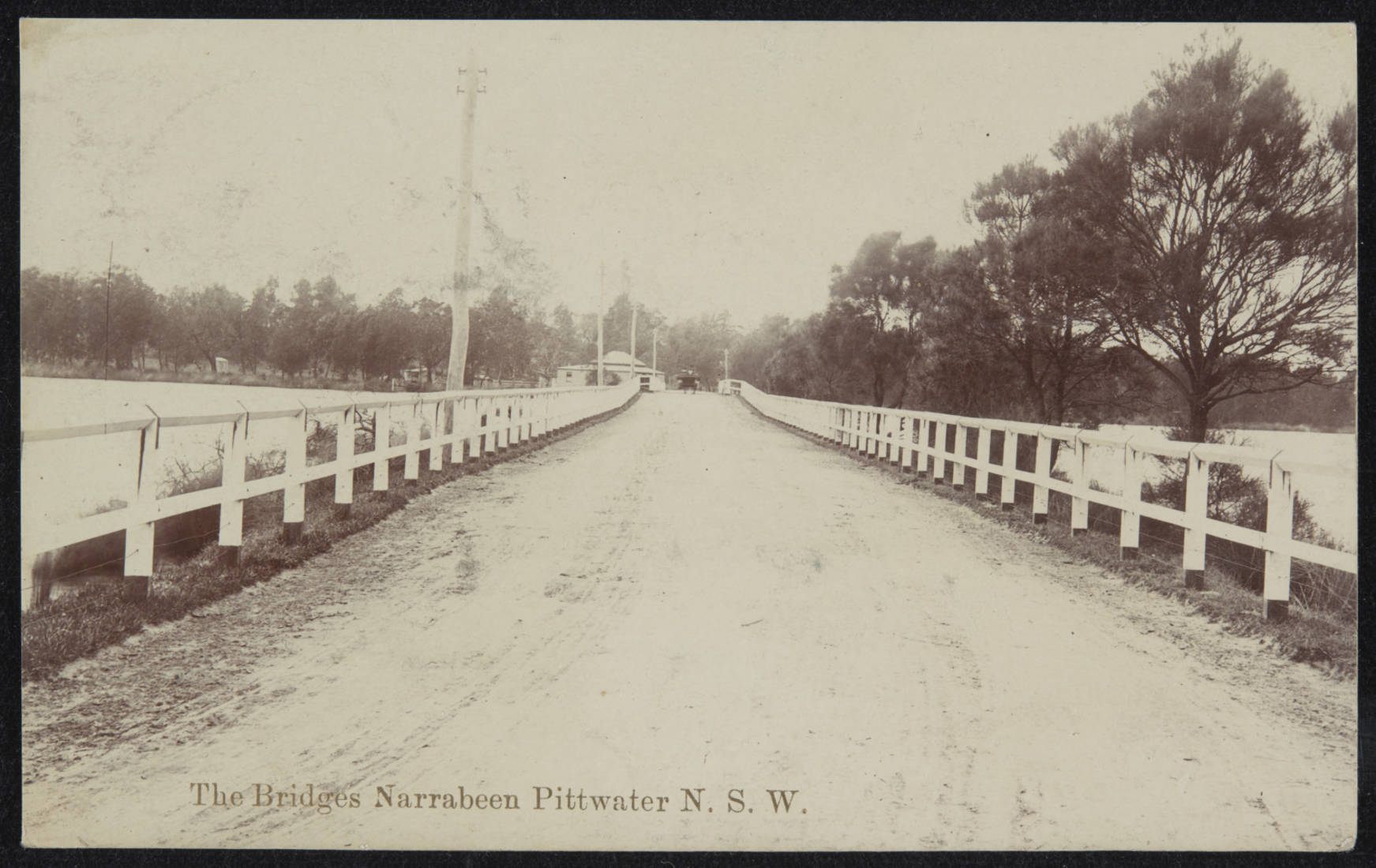
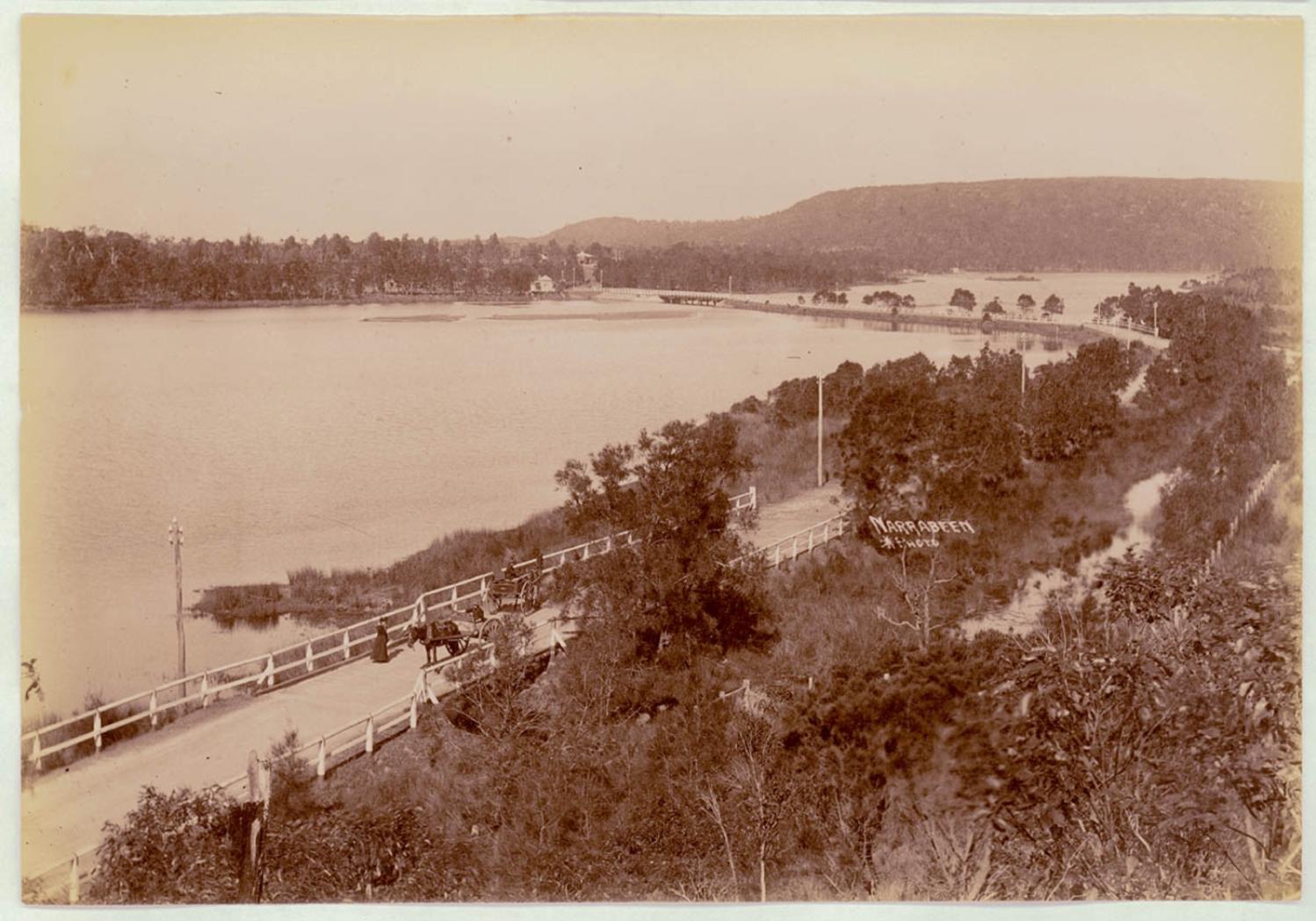
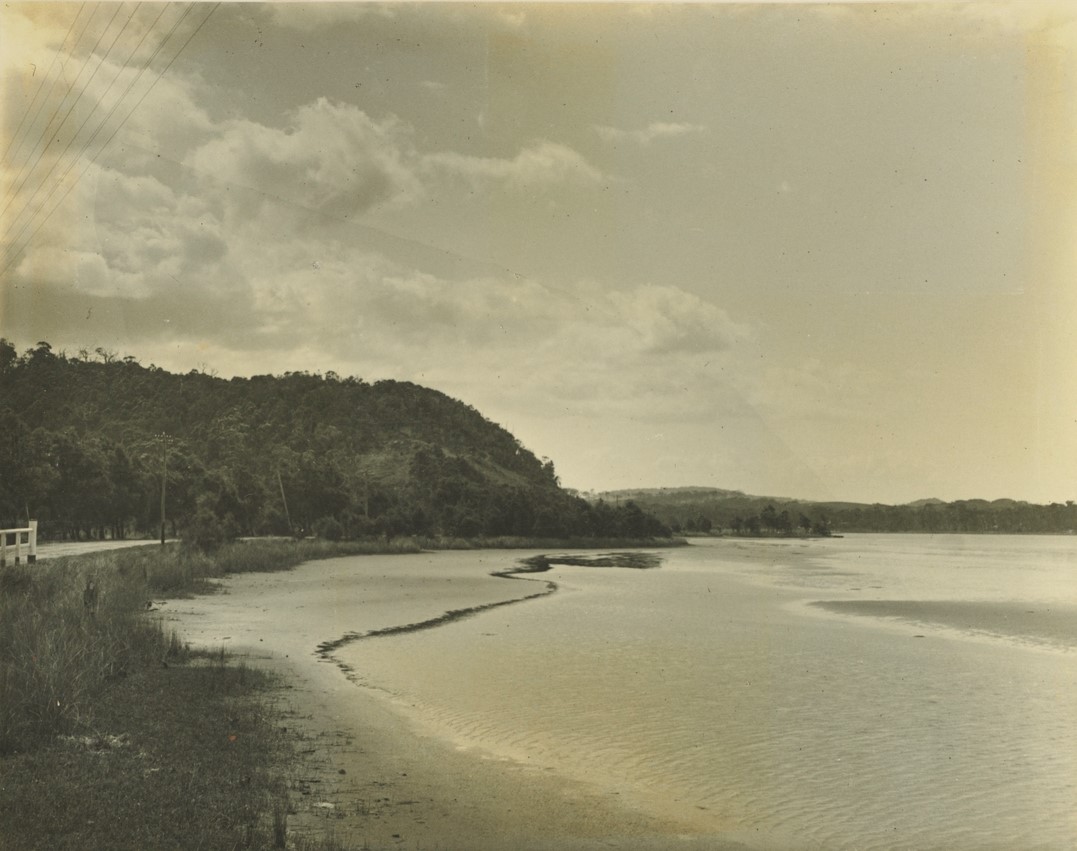
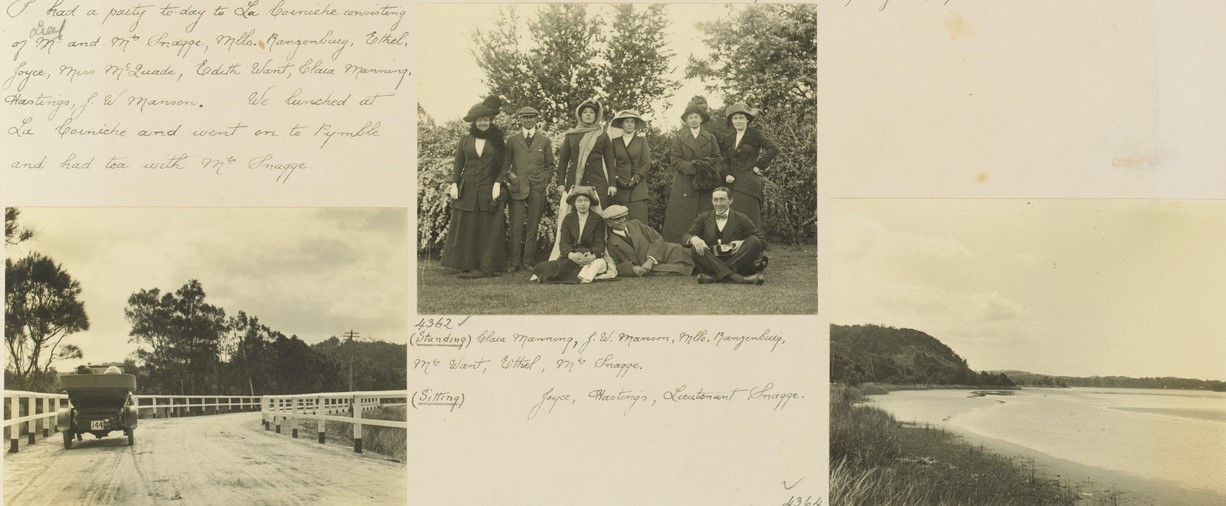
Sunday 27th August 1916. Today I took the new Electric Car 146 for a long run to Narrabeen, Margaret being with me. The Lancia car followed with Joyce,Ken, Miss Cadman and Miss Stickland. At Narrabeen, Margaret and I left the Electric car and we all went on to Bilgola in the Lancia, arriving there in time for lunch.

The Lancia car at Narrabeen. The Electric car at Narrabeen. Image No. a3295021h. From Album 67 Photographs of the Allen family 14 January 1916 - 5 February 1918, courtesy State Library of NSW.